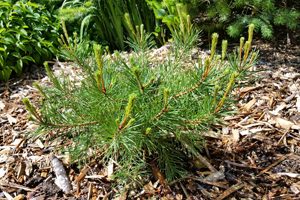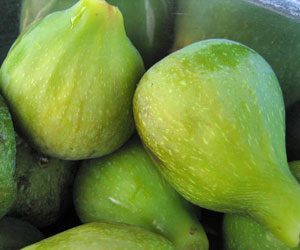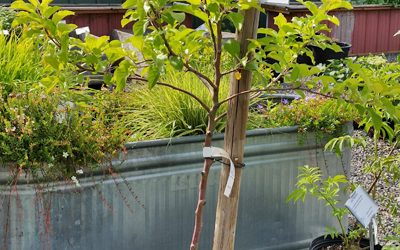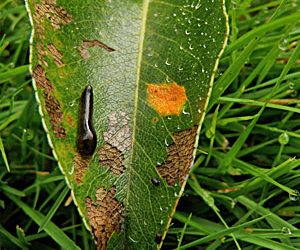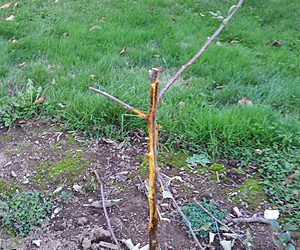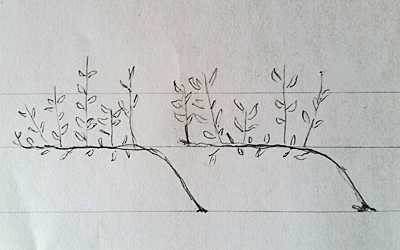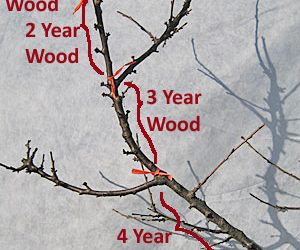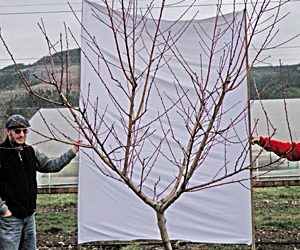Updates From The Farm
Summer Planting
We're often asked by customers if they can plant this time of year, or should they wait for fall. The simple answer- you can plant if you can water. Having said that, it is best not to plant during a real heat wave, when daytime temperatures are in the mid-80's or...
Inside the Incubator: Slanted Sun Farm
By Sarah Miller, Cloud Mountain Farm Center Intern Recently I had the pleasure to speak with Anna Morris of Slanted Sun Farm about her experience as an Incubator Farmer at Cloud Mountain Farm Center. The Incubator Farm Program is dedicated to maintaining and improving...
Multi-variety fruit trees and other musings
It sounds great, doesn't it? 4 or 5 varieties of apple, all on one tree! Both pie and sweet cherries on one tree! How about plums and peaches together-an on-the-tree fruit cocktail! No worries about pollination, long fruiting season....why doesn't Cloud Mountain carry...
Growing in Containers
We talk to many people these days that want to grow perennial and woody plants in containers. Maybe because they live in an apartment or condo, and don't have a yard, or because they find it easier to manage. But growing plants in containers is actually a little...
Pear Trees Problems
We're hearing that many people are seeing problems on their pear trees this year. One pest that seems to be showing up is pear blister mite. This little mite overwinters in the bud scales on the trees, waking up as the trees break dormancy, then feeding on the leaves...
Orchard Pest Worries
Even though it is early May, people are starting to worry about the two main summer orchard pests in apples- codling moth and apple maggot. The past couple of summers have been warmer than average, and in warm summers, these...
Living with Deer
Deer are a fact of life for many of us. They are charming to look at, but they can wreak havoc in the garden. Not only do they browse the plants, but the bucks will quickly destroy a plant when rubbing their antlers during the late summer and autumn rut. How can you...
Growing Figs in the Northwest
Though figs are of Mediterranean origin, they thrive and fruit well in the Pacific Northwest. They produce small embryonic fruit each year in late summer that over winters and ripens the following summer. They are self fertile. There are a few tips that can make a fig...
Scouting for Pest Problems
Scouting One of the most important tools a gardener or orchardist has are his or her eyes. Scouting is the act of observation, with the intent of recognizing disease or pest hazards before they become critical. The idea is to act before too much damage is done. This...
Upright Fruiting Offshoot (UFO) Sweet Cherry Training
Many visitors to Cloud Mountain are intrigued by our 'cherry tunnel'. This upright fruiting system (UFO) is an unusual way of growing sweet cherries. It was initially developed for commercial growers, but can be adapted to home gardens and market farms as well. The...
Pruning Sweet Cherries
One important note: always prune cherries when you will have at least 2 days of dry weather. This can help reduce canker. Most people grow sweet cherries as freestanding 'bush' shaped trees. In a future post, we'll talk about growing sweet cherries as an espalier or...
Pruning Stone Fruits
Traditionally, we have been pruning most of our stone fruits in late January along with the rest of the orchard for quite a number of years. A few years ago, we discovered something interesting in our Peach Plum. It has been my youngest daughter’s favorite plum since...

